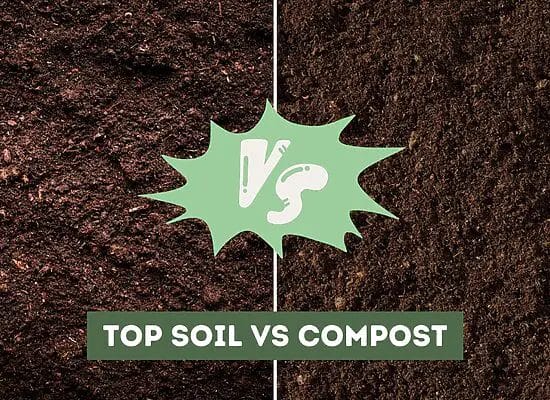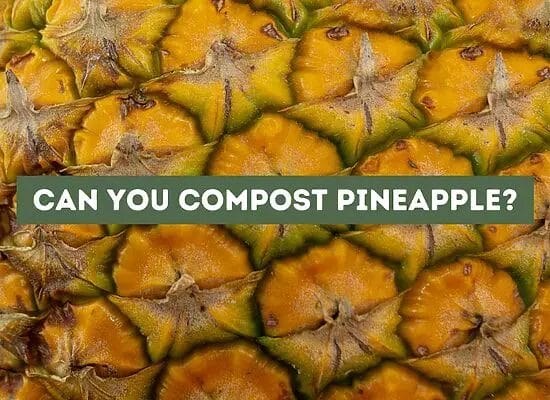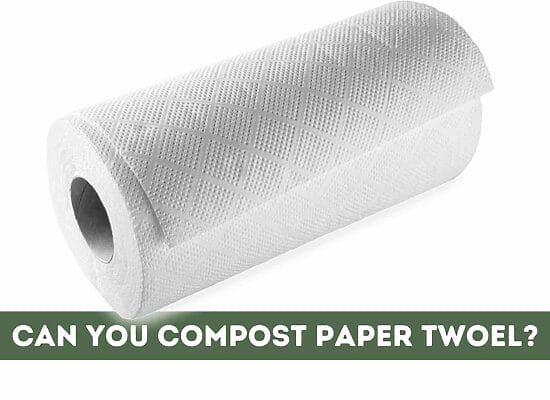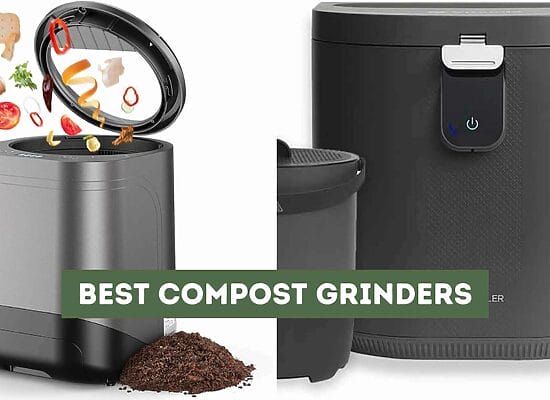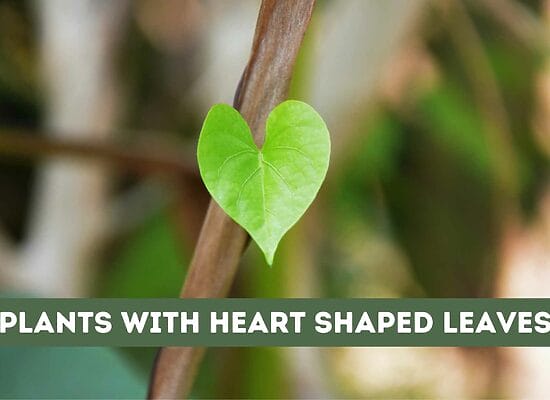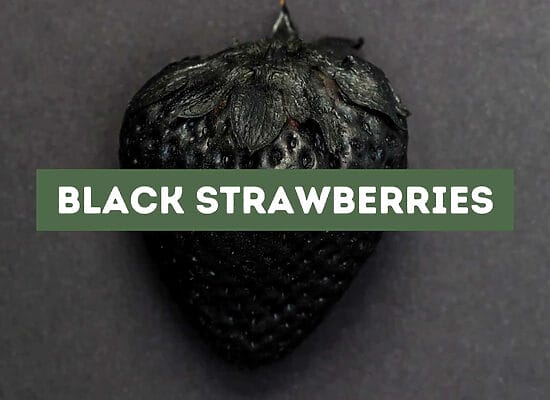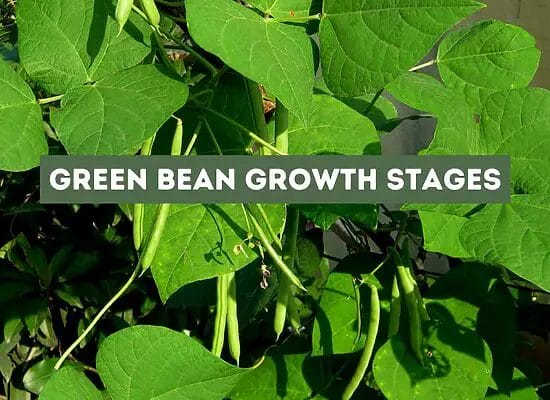
Are you interested in growing pumpkins? If so, it’s important to understand the different pumpkin growing stages they go through. By understanding these stages, you can ensure that your pumpkins grow to their full potential and are ready to be harvested at the right time.
Key takeaways:
- Understanding Pumpkin Basics:
- Pumpkins belong to the squash family (Cucurbitaceae), coming in various sizes and colors like orange, white, green, and blue.
- Different types of pumpkins include mini pumpkins, Atlantic Giant, Cinderella, and Connecticut Field, each with distinct attributes.
- Pumpkin Growing Stages:
- Pumpkin growth has distinct stages: planting the seed, germination, true leaves, vine growth, flower development, pollination, fruit formation, and finally, harvest.
- The pumpkin’s growth from seed to maturity takes about three to four months, needing attention and care throughout.
- Ideal Growing Conditions:
- Pumpkins thrive in well-draining, slightly acidic soil with a pH between 6.0 and 6.8.
- They require a warm growing season, with temperatures ranging from 70°F to 85°F (21°C to 29°C), and need at least 6 hours of direct sunlight daily.
- Consistent but not waterlogged soil moisture is necessary, with deep watering of about 1 inch (2.5 cm) per week, more during hot and dry periods.
- Planting and Nurturing:
- Plant pumpkin seeds around late spring or early summer, ensuring warm soil (around 65°F or 18°C) and proper drainage.
- Water and fertilize pumpkins regularly, considering mulching to retain moisture and prevent weed growth.
- Vertical growth using trellises and companion planting with corn can be helpful strategies.
- Pumpkin Vines, Flowers, and Fruit Development:
- Pumpkins grow on main and secondary vines, with male flowers appearing first and being important for pollination.
- Proper pollination, often aided by bees, is essential for fruit development.
- Pumpkins undergo color change, develop ridges, and mature over time, requiring sufficient water, sunlight, and nutrients.
- Harvesting and Dealing with Pests/Diseases:
- Harvest pumpkins when fully matured with hardened skin, and cure them for better shelf life.
- Common pests include aphids, cucumber beetles, and squash bugs; diseases like powdery mildew and bacterial wilt can also affect pumpkins.
- Preventative measures include maintaining cleanliness, providing proper care, and using organic insecticides/fungicides as needed.
Understanding Pumpkins
Pumpkins are a type of squash that belongs to the Cucurbitaceae family, which also includes cucumbers, zucchinis, and watermelons. They are known for their round shape and orange color, but they can also come in other colors, such as white, green, and even blue.
There are many different types of pumpkins, ranging from small pumpkins that fit in the palm of your hand to giant pumpkins that can weigh hundreds of pounds. Some popular varieties include the mini pumpkin, Atlantic Giant, Cinderella, and Connecticut Field. Each cultivar has its own unique characteristics, such as size, shape, and flavor.
Pumpkins are grown for both decorative and culinary purposes. While many people associate pumpkins with Halloween decorations, they are also used in a variety of dishes, such as soups, pies, and roasted vegetables.
When it comes to growing pumpkins, there are several stages to keep in mind. The first stage is germination, which occurs when pumpkin seeds are planted in nutrient-rich soil. The seeds will then sprout and develop into seedlings, which will eventually grow into vines.
Once the vines have grown, the pumpkin plant will begin to produce flowers. The first flowers to appear are usually male flowers, which have a stamen in the center that is covered in pollen. Female flowers will appear a few days later and have a stigma in the center that is ready to receive pollen.
Pollination is a crucial step in pumpkin growth, as it is necessary for the female flowers to be fertilized in order for pumpkins to form. This can be done naturally through bees and other insects, or it can be done manually by transferring pollen from male flowers to female flowers using a small brush or cotton swab.
After pollination, the pumpkins will begin to grow and mature. It is important to monitor the pumpkins closely during this stage and make sure they are getting enough water and nutrients. Once the pumpkins have reached maturity, they can be harvested and used for decoration or cooking.
Ideal Conditions for Growing Pumpkins
When it comes to growing pumpkins, it is important to provide them with the ideal conditions to ensure a healthy growth. Here are some factors to consider:
Soil
Pumpkins grow best in well-draining soil that is slightly acidic with a pH between 6.0 and 6.8. The soil should be rich in organic matter and nutrients, such as nitrogen, phosphorus, and potassium. Before planting, it is recommended to amend the soil with compost or well-rotted manure to improve its quality.
Temperature and Frost
Pumpkins are warm-season plants that require a long growing season with temperatures between 70°F and 85°F (21°C to 29°C). They are sensitive to frost and should only be planted after the last frost date in your area. In North America, this is typically between late April and early June.
Light and Sun Exposure
Pumpkins require full sun exposure, which means they need at least 6 hours of direct sunlight per day. It is important to choose a site that is not shaded by trees or buildings.
Water and Soil Moisture
Pumpkins need consistent moisture but not waterlogged soil. It is recommended to water them deeply once a week, providing about 1 inch (2.5 cm) of water. During hot and dry periods, they may need more frequent watering. It is important to avoid overhead watering as this can lead to fungal diseases.
Soil Temperature and Humidity
Pumpkin seeds germinate best in soil temperatures between 65°F and 85°F (18°C to 29°C). They require high humidity levels during germination, which can be achieved by covering the soil with plastic or using a humidity dome. Once the seedlings emerge, the plastic should be removed to prevent the buildup of moisture and the development of fungal diseases.
Pumpkin Growing Stages
Growing pumpkins can be a rewarding experience, but it requires patience and attention to detail. The pumpkin growing stages happen over three to four months in eight distinct steps. In this section, we will go over each stage in the growth of a pumpkin, from planting the seed to harvest.
Planting the Seed
The first stage of growing a pumpkin is planting the seed. You can plant the seeds directly in the garden or in seedling trays. If you want to have pumpkins ready for Halloween, plant the seeds in late July. Make sure the soil is warm and well-draining. Plant the seeds about an inch deep and three feet apart.
Germination
After planting the seed, the next stage is germination. Pumpkin seeds usually take about eight to ten days to germinate if the soil is warm. Keep the soil moist but not waterlogged. Once the seed has germinated, a sprout will appear.
True Leaves
The next stage is when the true leaves appear. These are the second set of leaves that grow after the initial sprouts. At this stage, the pumpkin seedling will start to grow rapidly.
Vines Start to Grow
The pumpkin plant stages will continue with the growth of the vine. The pumpkin vine will start to grow and spread out. It is important to keep the vine well-watered and free from weeds.
Flowers Develop
The next stage is when the flowers develop. Pumpkin plants produce male and female flowers. The male flowers appear first, followed by the female flowers. Bees and other pollinators are essential for pollinating the flowers.
Pollination Occurs
Once the flowers have bloomed, pollination occurs. The pollen from the male flowers must reach the female flowers for the pumpkin to develop. You can help the pollination process by hand-pollinating the flowers.
Fruits Form
After pollination, the fruits start to form. The pumpkin will start to grow and develop. It is important to keep the pumpkin well-watered and fertilized at this stage.
Ready for Harvest
The final stage is when the pumpkin is ready for harvest. Pumpkins are ready to harvest when they have reached their full size and the skin has hardened. Cut the pumpkin from the vine, leaving a few inches of stem attached.
Planting and Nurturing Pumpkins
Growing pumpkins is an exciting and rewarding experience. Whether you want to grow them for Halloween decorations or for making delicious pies, understanding the pumpkin growing stages is essential. Here are some tips on planting and nurturing pumpkins.
Planting
When it comes to planting pumpkin seeds, timing is crucial. The best time to plant pumpkin seeds is in late spring or early summer when the soil temperature reaches around 65°F (18°C). Pumpkins require full sun and well-drained soil, so choose a spot that receives plenty of sunlight and has good drainage.
To plant the seeds, dig a hole about 1 inch (2.5 cm) deep and place the seed inside. Cover the seed with soil and water it well. You can plant multiple seeds in a row and space them about 2-3 feet (60-90 cm) apart. Once the seeds have germinated, thin out the weaker seedlings and leave only the strongest ones.
Nurturing
Pumpkins require consistent watering and fertilization to grow healthy and strong. Water the plants deeply once a week, making sure the soil is moist but not waterlogged. Mulching around the plants can help retain moisture and prevent weeds from growing.
Fertilize the plants with a balanced fertilizer or compost once a month. You can also add aged manure to the soil before planting to provide additional nutrients. When the vines start to grow, you can create hills around the base of the plants to encourage root growth and prevent water from pooling around the stem.
If you have limited space, you can grow pumpkins vertically using a trellis. This method can also help improve air circulation and prevent diseases. Companion planting with corn can also be beneficial since the two plants complement each other’s growth and nutrient needs.
Pumpkin Vines and Flowers
Pumpkin vines are the backbone of the pumpkin plant, providing support and nourishment for the growing fruit. The main vines are the thickest and strongest, while secondary vines branch off from the main vine and help to spread the plant out. As the plant grows, it will produce male and female flowers.
Male flowers are the first to appear and are easily recognizable by their long, thin stems. These flowers do not produce fruit but are essential for pollination. Female flowers have a small pumpkin at the base and a shorter stem. Once pollinated, the fruit will begin to grow.
Pollination is a crucial step in the pumpkin growing process. Without pollination, the fruit will not develop. Bees are the primary pollinators of pumpkin flowers, so it’s important to provide a welcoming environment for them by planting flowers nearby.
It’s essential to keep an eye on the flowers during the growing season. If the plant is not producing female flowers, it may be due to a lack of nutrients or too much shade. If the flowers fall off before the fruit has a chance to develop, it may be due to poor pollination.
Pumpkin Fruits Development
As the pumpkin plant grows, it goes through several stages of development before the fruit is ready for harvest. The fruit development stage is an exciting time for pumpkin growers as it is when the pumpkin starts to take shape and mature.
During the fruit development stage, the pumpkin will grow in size and change color. The fruit starts off green and gradually turns orange as it matures. The pumpkin will also start to develop the characteristic ridges and bumps that are associated with pumpkins.
The rate at which the pumpkin develops will depend on several factors, including the pumpkin variety, weather conditions, and soil quality. Some pumpkin varieties take longer to mature than others, so it’s important to choose the right variety for your growing conditions.
To ensure that your pumpkin develops properly, it’s important to provide it with the right growing conditions. This includes providing it with plenty of water, fertilizer, and sunlight. It’s also important to keep the area around the pumpkin plant free from weeds and other pests that can compete for nutrients.
As the pumpkin reaches maturity, it will start to develop a hard outer shell. This is a sign that the pumpkin is ready for harvest. It’s important to harvest the pumpkin before the first frost of the season, as frost can damage the fruit and reduce its quality.
Harvesting and Storing Pumpkins
When it comes to harvesting pumpkins, timing is everything. The best time to harvest pumpkins is when they have reached full maturity, and their skin has hardened. You can tell if a pumpkin is ripe by pressing your fingernail into the skin. If it doesn’t leave a mark, the pumpkin is ready to be harvested.
To harvest a pumpkin, use a sharp knife or pruning shears to cut the stem about 4 inches above the pumpkin. It is important to keep the stem attached as it prolongs the shelf life of the pumpkin. When the stem is removed, it creates an entrance point for insect pests and rot.
After harvesting, it is important to cure the pumpkins. This involves placing them in a warm, dry area with good ventilation for 10-14 days. This allows the skin to harden and any cuts or bruises to heal. After curing, store the pumpkins in a cool, dark, and well-ventilated area with a temperature between 50-55°F (10-13°C).
If you plan on storing pumpkins for a longer period of time, you can also consider washing them with a solution of one part bleach to ten parts water. This helps to kill any bacteria on the surface of the pumpkin and can extend its shelf life.
When it comes to autumn harvest, pumpkins are a popular crop to grow. They can be used for decoration, carving, and cooking. If you plan on using your pumpkins for cooking, it is important to choose the right variety. Sugar pumpkins are the best for cooking as they have a sweeter and smoother flesh.
Dealing with Pests and Diseases
Pumpkins are susceptible to a range of pests and diseases that can damage or even kill your plants. In this section, we’ll cover some of the most common pumpkin pests and diseases, as well as some tips for preventing and treating them.
Pests
Some of the most common pumpkin pests include aphids, cucumber beetles, and squash bugs. Aphids are tiny insects that can suck the sap from your pumpkin plants, causing them to wilt and die. Cucumber beetles can transmit bacterial wilt, which can also kill your plants. Squash bugs can cause leaves to wilt and turn brown and can even kill your plants if left untreated.
To prevent these pests, try to keep your pumpkin patch as clean as possible. Remove any dead or dying plants, and keep the area around your plants free of debris. You can also use insecticidal soap or neem oil to kill aphids and other pests.
Diseases
Pumpkins are also susceptible to a range of diseases, including powdery mildew, downy mildew, and bacterial wilt. Powdery mildew is a fungal issue that can lead to a white, powdery layer forming on your plant leaves. Downy mildew is another fungal disease that can cause yellow spots to appear on the leaves of your plants. Bacterial wilt is a bacterial disease that can cause your plants to wilt and die.
To prevent these diseases, make sure your plants are well-watered and well-fertilized. Avoid watering your plants from above, as this can promote the growth of fungal diseases. You can also use fungicides to prevent and treat fungal diseases and rotate your crops to prevent the buildup of soil-borne diseases.
Mistakes to Avoid
One of the biggest mistakes you can make when growing pumpkins is over-watering your plants. Pumpkins need a lot of water, but they don’t like to be waterlogged. Make sure your soil is well-draining, and water your plants deeply once a week. Another mistake to avoid is planting your pumpkins too close together. This can promote the growth of fungal diseases and can make it harder to control pests.
Insecticides and Fungicides
If you do need to use insecticides or fungicides to control pests and diseases, make sure you follow the instructions carefully. Wear protective clothing, and avoid spraying on windy days. You can also try using organic insecticides and fungicides, such as neem oil and copper fungicide, which are less toxic to humans and the environment.
Uses of Pumpkins
Pumpkins are a versatile fruit that can be used in a variety of ways. From Halloween decorations to delicious pies, there are many uses for pumpkins. Here are some of the most common uses of pumpkins:
Halloween Decorations
One of the most popular uses of pumpkins is as a Halloween decoration. Carving pumpkins into jack-o’-lanterns is a fun and festive activity for the whole family. To carve a pumpkin, start by cutting off the top and scooping out the seeds and pulp. Then, use a sharp knife to cut a face or design into the pumpkin. Finally, place a candle or light inside the pumpkin to create a spooky glow.
Pies and Other Desserts
Pumpkins are also commonly used in pies and other desserts. Pumpkin pie is a classic American dessert that is often served during the fall and winter months. To make pumpkin pie, start by roasting a pumpkin and pureeing the flesh. Then, mix the puree with eggs, sugar, spices, and cream, and pour the mixture into a pie crust. Bake the pie until it is set, and serve it with whipped cream.
Pumpkin Patch
Visiting a pumpkin patch is a fun fall activity for people of all ages. Pumpkin patches typically have a variety of pumpkins in different shapes, sizes, and colors. You can pick out your own pumpkin to take home and carve or use it for other pumpkin-related activities.
Other Uses
In addition to the uses listed above, pumpkins can also be used in a variety of other ways. For example, pumpkin seeds can be roasted and eaten as a snack or used in salads and other dishes. Pumpkin puree can be added to soups, stews, and sauces to add flavor and texture. Pumpkin spice, a blend of cinnamon, nutmeg, ginger, and cloves, is a popular seasoning that can be used in a variety of sweet and savory dishes.
FAQ: Pumpkin Growing Stages
How long does it take to grow a pumpkin from a seed?
The time it takes for a pumpkin to grow from a seed to a mature fruit is typically around 90 to 120 days. However, this can vary depending on the pumpkin variety and growing conditions. Some varieties may take longer to mature, while others may mature more quickly.
What are the stages of pumpkin growth?
The stages of pumpkin growth include seed sowing, germination, true leaf appearance, vine growth, flower development, pollination, fruit formation, and harvesting. Each stage is important for the growth and development of the pumpkin plant.
What do pumpkins look like when they first sprout?
When a pumpkin seed first sprouts, it will have two small leaves called cotyledons. These leaves are responsible for absorbing sunlight and providing nutrients to the seedling. As the pumpkin plant grows, it will develop true leaves that are larger and more distinct in shape.
How long after planting do pumpkins bloom?
Pumpkins typically bloom about 6 to 8 weeks after planting. However, this can vary depending on the pumpkin variety and growing conditions. It’s important to ensure that the pumpkin plant is receiving enough sunlight, water, and nutrients to encourage healthy growth and blooming.
What do pumpkin plant leaves look like?
Pumpkin plant leaves are large and broad, with a rough texture and jagged edges. They are often green in color but can vary depending on the pumpkin variety. The leaves are responsible for absorbing sunlight and producing energy for the pumpkin plant. It’s important to keep the leaves healthy and free of disease to ensure optimal growth and fruit production.


